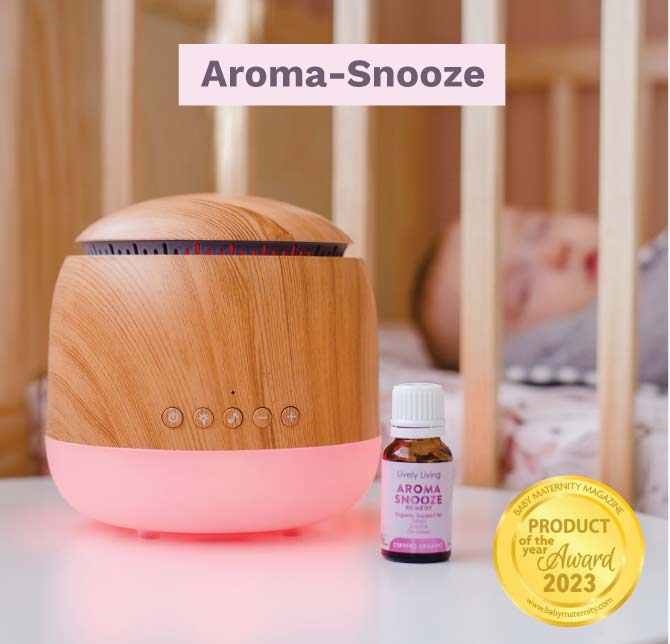Effective Solutions for Sleep Challenges in Toddlers
Addressing toddler sleep challenges and problems can be a complex task, as young children's sleep cycles and habits are still developing. Sleep difficulties during the toddler years may manifest in various ways such as trouble falling asleep, frequent night wakings, or early waking.In this post, we delve into recognizing signs of tiredness in your child and understanding the impact unaddressed sleep issues can have on their overall health and development.
We will also explore effective strategies to implement a consistent bedtime routine that promotes good sleeping behaviors. Further along, you'll learn about managing your child’s sleep using controlled comforting techniques like 'graduated extinction' and 'camp out', which help toddlers stay asleep throughout the night.
Nightmares and separation anxiety are common causes of disturbed sleep in older children; hence we provide practical tips for handling these situations effectively. Lastly, discover how using toddler clocks can assist with early morning wakings by encouraging better sleep habits.
Table of Contents:
- Understanding Sleep Challenges in Toddlers
- Consistent Bedtime Routine: The Secret to Toddler Sleep
- Managing Toddler Sleep with Controlled Comforting and 'Camp Out' Techniques
- Dealing with Nightmares and Separation Anxiety in Toddlers
- Using Toddler Clocks for Early Morning Wakings
- FAQs in Relation to Sleep Challenges in Toddlers
- Conclusion
Understanding Sleep Challenges in Toddlers
Toddlers and sleep - a match made in hell. From bedtime battles to midnight awakenings, it can be a real struggle. But fear not, parents. Understanding your child's sleep patterns is key to overcoming these challenges and toddler sleep problems.
Recognizing tiredness cues
When your youngster is prepared for rest, they'll make it known. Look out for signs like irritability, eye-rubbing, and excessive yawning. it will very soon be time for them to fall asleep.
The impact of ignoring sleep issues
Ignoring sleep issues can lead to long-term problems like dependency on sleep associations and even cognitive and emotional development issues. Studies show that persistent childhood insomnia can have serious consequences.
A consistent bedtime routine is key. This includes quiet time before bed, limiting screen time, rewarding good sleeping habits, and gradually reducing feeding duration over 7-10 nights if necessary.
Consistent Bedtime Routine: The Secret to Toddler Sleep
Toddler sleep troubles? Create a bedtime routine. It helps your little one understand what's coming and sets their internal clock for better sleep. Here's how:
Effective Bedtime Routine Steps For Your Child's Sleep
Start with quiet activities like reading or a warm bath. Limit screen time to reduce blue light exposure. Then:
- Create a calm environment: dim lights, soft music, or white noise.
- Be consistent: same schedule every night, even on weekends.
- Follow a predictable sequence: aroma-snooze turns on, brush teeth, pajamas, story time, lights out.
Reward Good Sleep Behaviors
Positive reinforcement works wonders. Praise your child for staying in bed all night or gradually reduce feeding time to manage hunger pangs. Use reward charts to earn stars for successful nights, then exchange for small treats or privileges. This builds independence and self-soothing skills for healthy sleep development.
Remember, patience is key. Changes take time, but a consistent bedtime routine can make all the difference.
Managing Toddler Sleep with Controlled Comforting and 'Camp Out' Techniques
Managing toddler sleep can be tough, but two techniques have proven effective: controlled comforting and the 'camp out' method.
How Graduated Extinction Works for Toddler Sleep
Graduated extinction involves leaving your child's room for short periods, gradually increasing the duration each night. If they cry, wait a few minutes before returning to reassure them briefly. Consistency and patience are key.
- Encourages self-soothing
- Reduces reliance on parental presence
- Can yield positive results within one or two weeks
Exploring The Benefits of Adult Fading Technique
The 'camp out' technique involves sitting near your toddler until they fall asleep, then slowly moving further away over subsequent nights. It's an excellent way of easing separation anxiety while fostering independence in sleep habits.
- Provides reassurance without direct contact
- Progressively moves farther away
Note: Choose the technique that suits you and your child's individual needs. The aim isn't to eliminate all wake-ups overnight, but to teach healthy settling behaviors gradually over time.
Dealing with Nightmares and Separation Anxiety in Toddlers
Don't let nightmares and separation anxiety ruin your toddler's sleep. Here are some tips to help them snooze soundly:
Strategies for Handling Nightmares Effectively
When your little one wakes up from a nightmare, comfort them right away. Talk about the dream during the day, encourage positive thoughts before bed, and read calming bedtime stories.
- Talk it out: Discussing the nightmare during daylight hours can help your child process their fears.
- Think happy thoughts: Encourage your child to focus on positive things as they drift off to sleep.
- Read a soothing story: Bedtime stories with comforting themes can help your child relax and fall asleep.
Tackling Separation Anxiety During Nighttime
If your child struggles with separation anxiety at night, try providing familiar objects like stuffed animals or plug-in lights like the Aroma-Snooze You can also create a soothing environment with gentle scents from organic essential oils diffused through ultrasonic aromatherapy diffusers.
- Bring a piece of home: Familiar objects like soft toys or blankets can offer reassurance while you're away.
- Create a calming atmosphere: A quiet room with dimmed lights and soothing scents can help your child feel safe and secure.
For more information on promoting healthy sleep habits in toddlers, check out SleepFoundation.org.
Using Sound Machines for Longer Sleep
The toddler years can be a challenging time when it comes to sleep. Many parents struggle with various toddler sleep problems, from bedtime resistance and night wakings to early waking. Fortunately, there are tools available that can help alleviate these issues and promote better sleep habits in children.
A sound machine is one such tool that has been proven effective in helping children fall asleep faster and stay asleep longer. The calming sounds produced by these machines mask disruptive noises in the environment, allowing your little one to drift off into deep sleep more easily.
The Aroma-Snooze Sleep Aid: An Effective Solution
One product we recommend at Lively Living is the Aroma-Snooze Sleep Aid. This innovative device combines multiple features designed specifically to aid with common toddler sleep problems. It includes pink noise - a soothing sound similar to white noise but even more effective for promoting deep, restful slumber.
In addition to pink noise, the Aroma-Snooze also offers other comforting sounds like ocean waves or a heartbeat rhythm which mimic natural womb-like environments that young children find particularly relaxing. Furthermore, it plays gentle lullabies meant not only for entertainment but also as part of an ideal bedtime routine aiming at regularizing their sleep schedule.
Beyond Sounds: Additional Features of Aroma-Snooze
The benefits of this multi-functional gadget go beyond just providing soothing sounds; they offer comprehensive solutions addressing different aspects related to light sleep patterns too often seen among toddlers, causing them frequent night awakenings or difficulty maintaining consistent afternoon naps. The device integrates ultrasonic aromatherapy diffusers dispersing certified organic essential oils known for their calming properties, further aiding relaxation before bedtime, ensuring your child falls asleep quicker while reducing instances of early morning wake-ups due to disturbed sleep cycles.Plus, its built-in red LED light serves as the perfect nightlight, offering soft illumination without disrupting your child's natural circadian rhythms, thereby encouraging longer uninterrupted periods of peaceful slumber throughout the night and improving the overall quality of their nighttime rests significantly.
FAQs in Relation to Sleep Challenges in Toddlers
What causes toddlers to struggle with sleep?
Toddlers may have trouble sleeping due to separation anxiety, inconsistent bedtime routines, overstimulation before bed, and nightmares.
For more information on these issues, check out our article on Understanding Sleep Challenges in Toddlers.
How can I help my toddler sleep better?
Establishing a consistent bedtime routine, managing comfort levels with techniques like 'Camp Out', and addressing nightmares and separation anxiety can help your toddler sleep better.
For additional support, explore our range of baby sleep aids.
What are the most common sleep problems for children?
The two most common sleep disorders in children are insomnia and restless legs syndrome (RLS).
Learn more about these conditions in our guide on Sleep Disorders in Toddlers.
What are some sleep disorders that toddlers can experience?
Toddlers can experience insomnia, restless legs syndrome (RLS), night terrors, and obstructive sleep apnea.
Our comprehensive resource on Sleep Disorders in Toddlers provides detailed insights into each condition.
Conclusion
Managing toddler sleep challenges can be a real snooze-fest, but with the right strategies and tools, you can help your little one catch some quality Z's.
Recognizing signs of tiredness, implementing a consistent bedtime routine, and using controlled comforting techniques can all help your toddler drift off to dreamland.
And when it comes to handling nightmares and separation anxiety, a little extra TLC can go a long way.
Don't forget about the early morning wake-ups - pink noise sounds can help them drift back off to sleep
Remember, every child is different, so be patient and persistent in finding what works best for your family.
All the Best in good health and good sleep.





















